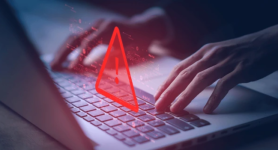A computer virus is a malicious software program designed to disrupt, damage, or gain unauthorized access to systems, files, or networks. Much like a biological virus, it replicates itself and spreads from one device to another, often without the user's knowledge.
Viruses are just one type of malware (malicious software), but they are among the most widely known and feared. In a world dependent on digital systems, a well-planned virus attack can crash networks, steal identities, paralyze industries, or even shut down government operations.
Viruses typically spread through:
Once activated, a virus can perform harmful actions like deleting files, logging keystrokes, or creating backdoors for hackers.
Each of these can cause serious issues — from simple annoyance to catastrophic data loss.
These cases show how powerful and destructive computer viruses can be — not just to individuals, but to global infrastructure.
To avoid falling victim to computer viruses:
Prevention is always better than cure when it comes to cybersecurity.
Modern antivirus software like Norton, Bitdefender, Kaspersky, and Windows Defender can detect and remove most virus threats. They scan files, emails, downloads, and even behavior patterns to identify threats.
For businesses, enterprise-grade firewalls, endpoint protection, and real-time threat monitoring systems are crucial.
As technology advances, so do cybercriminals. Future viruses are expected to:
Cyber defense must also evolve — through ethical hacking, zero-trust security models, and real-time behavioral analytics.
Computer viruses are a constant threat in today’s interconnected world. Understanding how they work, how they spread, and how to protect against them is essential for every individual and organization.
Being cautious online, keeping systems updated, and investing in cybersecurity tools are no longer optional — they are essential digital survival skills.
 Invitation to Discussion:
Invitation to Discussion:
Have you or someone you know ever been affected by a virus or ransomware attack?
What do you think is the most effective way to protect ordinary users from growing digital threats?
Let’s discuss your experiences and tips in the comments!
Viruses are just one type of malware (malicious software), but they are among the most widely known and feared. In a world dependent on digital systems, a well-planned virus attack can crash networks, steal identities, paralyze industries, or even shut down government operations.
How Do Computer Viruses Spread?
Viruses typically spread through:
- Infected email attachments
- Downloading cracked software or fake applications
- Visiting compromised websites (drive-by downloads)
- USB devices or shared networks
- Exploiting vulnerabilities in outdated software
Once activated, a virus can perform harmful actions like deleting files, logging keystrokes, or creating backdoors for hackers.
Types of Computer Viruses
- File Infector Virus
- Attaches itself to executable files (.exe)
- Activates when the program runs
- Macro Virus
- Targets Microsoft Office documents
- Spreads through email attachments
- Boot Sector Virus
- Infects the startup section of storage devices
- Triggers during system boot
- Polymorphic Virus
- Changes code structure to avoid detection
- Very difficult to eliminate
- Resident Virus
- Hides in memory and runs in the background
- Re-infects systems even after deletion of host file
Each of these can cause serious issues — from simple annoyance to catastrophic data loss.
Real-World Examples of Famous Computer Viruses
- ILOVEYOU Virus (2000):
Spread through email, disguised as a love letter; infected over 50 million systems in days. - Stuxnet (2010):
Allegedly developed to sabotage Iran’s nuclear facilities; highly sophisticated. - WannaCry (2017):
A ransomware virus that locked users out of their files unless a ransom was paid in Bitcoin.
These cases show how powerful and destructive computer viruses can be — not just to individuals, but to global infrastructure.
Prevention and Protection Strategies
To avoid falling victim to computer viruses:
- Install trusted antivirus software and keep it updated
- Regularly update your operating system and software patches
- Avoid clicking on suspicious links or downloading unknown files
- Use strong, unique passwords and enable two-factor authentication
- Back up data regularly to an external or cloud location
- Educate yourself and others about phishing and digital hygiene
Prevention is always better than cure when it comes to cybersecurity.
Antivirus and Cybersecurity Tools
Modern antivirus software like Norton, Bitdefender, Kaspersky, and Windows Defender can detect and remove most virus threats. They scan files, emails, downloads, and even behavior patterns to identify threats.
For businesses, enterprise-grade firewalls, endpoint protection, and real-time threat monitoring systems are crucial.
The Future of Viruses: Smarter, Sneakier Threats
As technology advances, so do cybercriminals. Future viruses are expected to:
- Use AI and machine learning to bypass security
- Target cloud systems and IoT devices
- Exploit human error through smarter phishing and social engineering
Cyber defense must also evolve — through ethical hacking, zero-trust security models, and real-time behavioral analytics.
Conclusion
Computer viruses are a constant threat in today’s interconnected world. Understanding how they work, how they spread, and how to protect against them is essential for every individual and organization.
Being cautious online, keeping systems updated, and investing in cybersecurity tools are no longer optional — they are essential digital survival skills.
Have you or someone you know ever been affected by a virus or ransomware attack?
What do you think is the most effective way to protect ordinary users from growing digital threats?
Let’s discuss your experiences and tips in the comments!

